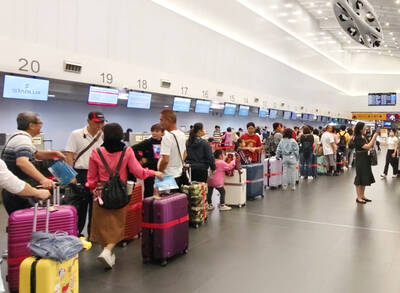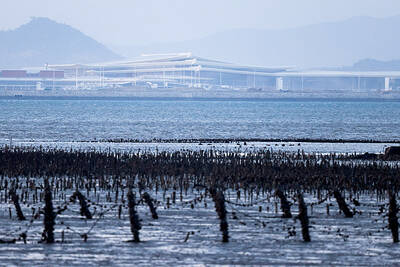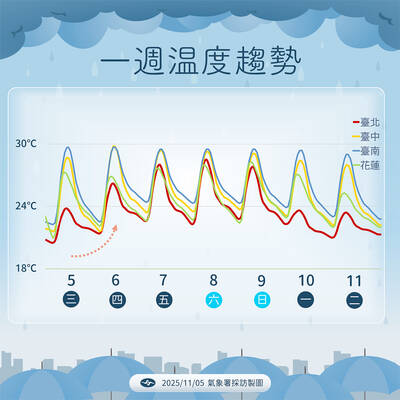The Council of Cultural Affairs yesterday officially designated National Taiwan Democracy Memorial Hall and its surrounding park a historic site, saying the plaza, the exhibit hall and the main building were all protected under the new provision.
Council Chairwoman Weng Chin-chu (
"Since the lifting of martial law 20 years ago, many human rights demonstrations have taken place here. The ground has become a symbol of the nation's democratic movement," she said.
The hall, formerly known as Chiang Kai-shek (CKS) Memorial, has been a source of contention between the central government and the Taipei City Government since May, when the Democratic Progressive Party proposed to rename the building, which had been naming after the dictator.
The Taipei City Government argued it had jurisdiction over the hall, adding that the Executive Yuan did not have the right to unilaterally change the name without receiving permission from the city government.
In an bid to block the name change, the city government petitioned to turn CKS Memorial Hall into a national historic site, which would have prevented anything related to the hall from being altered, including its name.
At the moment, the main building bears both names, as the legislature has been unable to reach a consensus on ratifying the new name.
A Ministry of Education official said yesterday that although the name issue remains unresolved, it does not affect the decision of turning the park and its building into a historical site.
The National Concert Hall, the National Theater and the ground's signature blue-trimmed white walls were not included in the provision.

Three Taiwanese airlines have prohibited passengers from packing Bluetooth earbuds and their charger cases in checked luggage. EVA Air and Uni Air said that Bluetooth earbuds and charger cases are categorized as portable electronic devices, which should be switched off if they are placed in checked luggage based on international aviation safety regulations. They must not be in standby or sleep mode. However, as charging would continue when earbuds are placed in the charger cases, which would contravene international aviation regulations, their cases must be carried as hand luggage, they said. Tigerair Taiwan said that earbud charger cases are equipped

Foreign travelers entering Taiwan on a short layover via Taiwan Taoyuan International Airport are receiving NT$600 gift vouchers from yesterday, the Tourism Administration said, adding that it hopes the incentive would boost tourism consumption at the airport. The program, which allows travelers holding non-Taiwan passports who enter the country during a layover of up to 24 hours to claim a voucher, aims to promote attractions at the airport, the agency said in a statement on Friday. To participate, travelers must sign up on the campaign Web site, the agency said. They can then present their passport and boarding pass for their connecting international

UNILATERAL MOVES: Officials have raised concerns that Beijing could try to exert economic control over Kinmen in a key development plan next year The Civil Aviation Administration (CAA) yesterday said that China has so far failed to provide any information about a new airport expected to open next year that is less than 10km from a Taiwanese airport, raising flight safety concerns. Xiamen Xiangan International Airport is only about 3km at its closest point from the islands in Kinmen County — the scene of on-off fighting during the Cold War — and construction work can be seen and heard clearly from the Taiwan side. In a written statement sent to Reuters, the CAA said that airports close to each other need detailed advanced

UNKNOWN TRAJECTORY: The storm could move in four possible directions, with the fourth option considered the most threatening to Taiwan, meteorologist Lin De-en said A soon-to-be-formed tropical storm east of the Philippines could begin affecting Taiwan on Wednesday next week, the Central Weather Administration (CWA) said yesterday. The storm, to be named Fung-wong (鳳凰), is forecast to approach Taiwan on Tuesday next week and could begin affecting the weather in Taiwan on Wednesday, CWA forecaster Huang En-hung (黃恩鴻) said, adding that its impact might be amplified by the combined effect with the northeast monsoon. As of 2pm yesterday, the system’s center was 2,800km southeast of Oluanbi (鵝鑾鼻). It was moving northwest at 18kph. Meteorologist Lin De-en (林得恩) on Facebook yesterday wrote that the would-be storm is surrounded by